“We, therefore, the Representatives of the united States of America, in General Congress, Assembled, appealing to the Supreme Judge of the world for the rectitude of our intentions, do, in the Name, and by Authority of the good People of these Colonies, solemnly publish and declare, That these united Colonies are, and of Right ought to be Free and Independent States.”
~Thomas Jefferson
Declaration of Independence
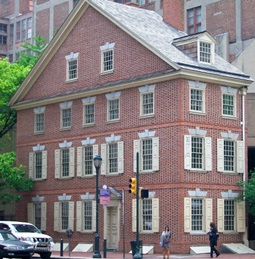
1776 – The Second Continental Congress, assembled in Philadelphia, formally adopted Virginian Richard Henry Lee’s resolution for independence from Great Britain. The vote was unanimous, with only New York abstaining (the New York Provincial Congress voted to “join with” the other colonies on July 9).
John Adams wrote that July 2 “will be the most memorable epoch in the history of America. I am apt to believe that it will be celebrated by succeeding generations as the great anniversary festival.”
Instead, the date has been largely forgotten in favor of July 4, when Jefferson’s edited Declaration of Independence was adopted.
The building in the photo is the reconstructed Graff House, where Jefferson wrote the Declaration on the second floor. The original building was torn down in 1883.
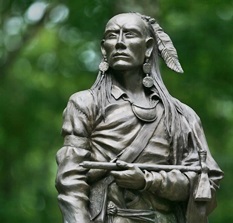
1809 – Alarmed by the growing encroachment of whites squatting on Native American lands, Shawnee Chief Tecumseh called on all Indians to unite and resist.
By the early 19th century, many Shawnee and other Ohio Valley Indians were becoming increasingly dependent on trading with the Americans for guns, cloth, and metal goods. Tecumseh spoke out against such dependence and called for a return to traditional Indian ways.
Together, Tecumseh argued, the various tribes had enough strength to stop the whites from taking further land. Within one year, he had organized the Ohio Valley Confederacy, which united Indians from the Shawnee, Potawatomi, Kickapoo, Winnebago, Menominee, Ottawa, and Wyandot nations.
In 1811, future president William Henry Harrison led an attack on the confederacy’s base on the Tippecanoe River. Although the Battle of Tippecanoe was close, Harrison finally won out and destroyed much of Tecumseh’s army.
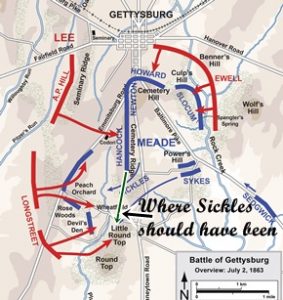
1863 – The Battle of Gettysburg: Day 2 … Confederate General Robert E. Lee’s Army of Northern Virginia attacked General George G. Meade’s Army of the Potomac at both Culp’s Hill and Little Round Top, but failed to move the Yankees from their positions.
The Union army was in the shape of a fishhook extending from Culp’s Hill on the Union right, to Little Round Top on the Union left. Meade decided to maintain a defensive stance and let the Confederates attack his strong positions.
On the Union’s right flank, Confederates from General Richard Ewell’s corps struggled up steep and heavily wooded Culp’s Hill before being turned back by heavy Union fire.
The most significant action of the day, though, was on the other end of the Union line – and much of it was caused by one person … Union General Daniel Sickles.
Meade had placed Sickles and his Third Corps on the extreme left, near Little Round Top. Sickles – on his own – advanced his 12,000-man corps to the slightly higher ground along the Emmitsburg Road, moving away from Cemetery Ridge.
Far out in front of the main Union line and aligned along the Emmitsburg Road with its right flank in the air was Brig. Gen. Andrew Humphreys’ division.
Maj. Gen. David B. Birney’s division, with its left flank exposed, occupied the Peach Orchard in a line that angled back past the Wheat Field and Rose’s Woods to the Devil’s Den, a cluster of huge boulders separated from Little Round Top by a creek called Plum Run. The two divisions joined at the Peach Orchard, the apex of Sickles’ dangerously vulnerable salient.
Humphreys’ and Birney’s divisions were subject to attacks from two sides and were spread out over a longer front than their small corps could defend.
Confederate Brigadier General George T. Anderson’s brigade advanced into The Wheatfield without advance knowledge that the Union lines had changed. Charge and counter charge on the field and nearby woods left more than 4,000 dead and wounded Union and Confederate soldiers. In three hours, command of the field changed hands six times before the Confederates withdrew.
Confederate infantry brigades of Brig. Gen. William Barksdale and Brig. Gen. William T. Wofford struck the Peach Orchard from the west, destroying the Yankee defenders.
The damage done by Sickles’ unauthorized advance had one other serious repercussion.
Brigadier General Gouverneur K. Warren, chief engineer on General Meade’s staff, had been sent by Meade to survey the left flank of the army after Sickles’ had abandoned his designated spot. Warren discovered Little Round Top was completely unprotected.
Colonel Strong Vincent, in command of a brigade from the Fifth Corps, was marching his soldiers toward the Peach Orchard when he was approached by a staff officer from General Warren.
Vincent immediately realized the desperate situation. Despite his orders to go to the aid of Sickles, Vincent turned his infantrymen southward and led them to Little Round Top.
Vincent advanced his brigade, made up of the 16th Michigan, 44th New York, 83rd Pennsylvania and 20th Maine regiments toward the hill.
He placed the Maine regiment on the extreme left of the position, which also happened to be the extreme left of the Union army.
He instructed Colonel Joshua Lawrence Chamberlain where to position his men and let him know he could not retreat under any circumstances.
At the opposite end of Vincent’s Line, the Confederate pressure was too great. The 4th and 5th Texas Infantry Regiments pressed back the Union line.
Hearing the commotion, Vincent rushed to rally his men where he was struck by a Confederate bullet and mortally wounded while directing the defense just as reinforcements arrived.
The 140th New York Infantry led by Colonel Patrick O’Rorke appeared on the summit of the hill.
Seeing the melee below him, O’Rorke turned to his men and led them in a charge straight into the Texans.
“Here they are, boys!” O’Rorke shouted, “Commence firing!” These were his last words. Seconds later a bullet struck him in the neck and O’Rorke fell without a sound among the boulders. A flurry of rifle shots and flash of bayonets sent the Texans reeling down the hill.
At the same time, waves of Confederates from the 15th and 47th Alabama rushed up the hill and each time they were repulsed. At one point, Chamberlain was forced to extend his lines dangerously thin positioning his Maine men at a right angle to counter the Confederates trying to overextend his lines.
After 90 minutes of holding the Union left, some men had a few cartridges left while others had none. Knowing that the next charge would break his thin line, Chamberlain ordered his men to fix bayonets and ordered a right wheel maneuver down the hill to sweep the Alabama regiments off the hill.
Little Round Top had been saved.
The story continues tomorrow.
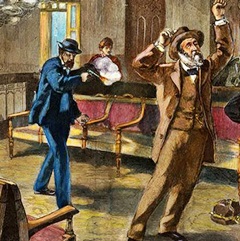
1881 – Only four months into his administration, President James A. Garfield was shot as he walked through a railroad waiting room in Washington, D.C.
His assailant, Charles J. Guiteau, was a disgruntled office seeker who had unsuccessfully sought an appointment to the U.S. consul in Paris. The president was shot in the back and the arm, and Guiteau was arrested.
On September 19, 1881, President Garfield died of blood poisoning.
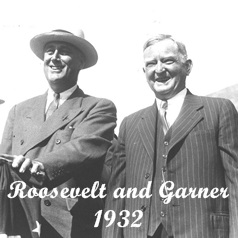
1932 – It took four ballots, but Democrats nominated New York Gov. Franklin D. Roosevelt for president at their convention in Chicago.
After three ballots, Roosevelt had not secured the 770 votes necessary for the nomination (he was at 682), but his campaign was able to persuade House Speaker John Nance Garner to release his 101 delegates to vote for Roosevelt.
Garner became the vice-presidential candidate, likely as part of a deal for his delegates.
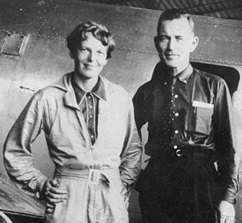
1937 – The Lockheed aircraft carrying American aviator Amelia Earhart and navigator Frederick Noonan was reported missing near Howland Island in the Pacific.
The pair were attempting to fly around the world when they lost their bearings during the most challenging leg of the global journey: Lae, New Guinea, to Howland Island, a tiny island 2,227 nautical miles away, in the center of the Pacific Ocean.
The U.S. Coast Guard cutter Itasca was in sporadic radio contact with Earhart as she approached Howland Island and received messages that she was lost and running low on fuel.
No trace of Earhart or Noonan was ever found.
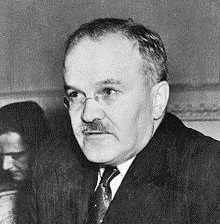
1947 – Soviet Foreign Minister Vyacheslav Molotov walked out of a meeting with representatives of the British and French governments, signaling the Soviet Union’s rejection of the Marshall Plan.
Molotov immediately made clear the Soviet objections to the Marshall Plan. First, it would include economic assistance to Germany, and the Russians would not tolerate aid to the enemy that had so recently devastated the Soviet Union.
Second, Molotov was adamant in demanding that the Soviet Union have complete control and freedom of action over any Marshall Plan funds Germany might receive.
Finally, the Foreign Minister wanted to know precisely how much money the United States would give to each nation.
When it became clear that the French and British representatives did not share his objections, Molotov stormed out of the meeting. In the following weeks, the Soviet Union pressured its Eastern European allies to reject all Marshall Plan assistance. That pressure was successful and none of the Soviet satellites participated.
The Marshall Plan eventually provided billions of dollars to European nations and helped stave off economic disaster in many of them.
1956 – Elvis Presley recorded two monster hits at RCA Victor Studios in New York City.

1961 – Ernest Hemingway, acclaimed novelist and Pulitzer Prize winner, died of a self-inflicted gunshot. He was 61.
Hemingway’s works are considered classics of American literature: For Whom The Bell Tolls, A Farewell To Arms, The Sun Also Rises, Indian Camp, and of course, The Old Man and The Sea, which won him Pulitzer Prize for Literature in 1954.
In 1954, while in Africa, Hemingway was almost fatally injured in two successive plane crashes. In addition to being affected by the physical ailments suffered in those crashes, Hemingway’s health was compromised by his having been a heavy drinker for most of his life.
Therapy, including electroshock treatments, had given him no relief. On this date, wracked with pain and becoming increasingly paranoid, he unlocked the basement storeroom where his guns were kept, gone upstairs to the front entrance foyer of his Ketchum, Idaho home, and shot himself in the head.
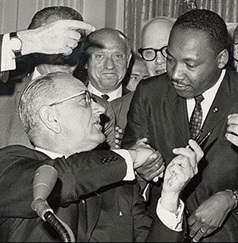
1964 – President Lyndon B. Johnson signed into law the historic Civil Rights Act in a nationally televised ceremony at the White House.
The most sweeping civil rights legislation passed by Congress since the post-Civil War Reconstruction era, the Civil Rights Act prohibited racial discrimination in employment and education and outlawed racial segregation in public places such as schools, buses and parks.
In addition, the bill laid important groundwork for a number of other pieces of legislation – including the Voting Rights Act of 1965, which set strict rules for protecting the right of African Americans to vote – that have since been used to enforce equal rights for women as well as all minorities.
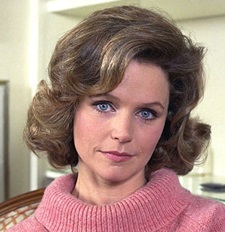
1991 – Academy Award nominated actress Lee Remick died of kidney and liver cancer at the age of 55.
After director Elia Kazan cast her as a seductive cheerleader in his 1957 film, A Face in the Crowd, she gave highly praised performances in Long Hot Summer, Anatomy of a Murder and Wild River.
Her portrait of a happily married housewife turned alcoholic in Days of Wine and Roses brought her an Academy Award nomination.
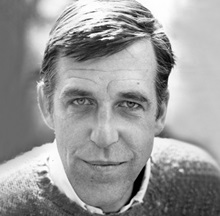
1993 – Actor Fred Gwynne, best known for his roles in the 1960s sitcoms Car 54, Where Are You? and The Munsters, died of complications from pancreatic cancer. He was 66.
After the demise of The Munsters in 1966, Gwynne’s career came to a screeching halt. TV and movie producers were afraid to hire him, believing audiences would only see the fumbling Herman Munster.
It wasn’t until he played a minor role in 1987s Fatal Attraction that Gwynne finally started getting attention again.
He later appeared in Ironweed, Pet Sematary, and My Cousin Vinny.
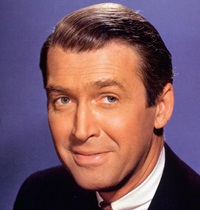
1997 – Academy Award winning actor James “Jimmy” Stewart died at the age of 89.
I don’t know where to begin, other than to list just a few of the films he appeared in, beginning with the films that earned him Academy Award nominations for Best Actor: Mr. Smith Goes To Washington, It’s A Wonderful Life, Anatomy Of A Murder, Harvey, and The Philadelphia Story (which earned him the Oscar).
But there are many more reasons Stewart was named the third-greatest male screen legend of the Golden Age of Hollywood by the American Film Institute: Rear Window, Vertigo, Call Northside 777, Rope, Strategic War Command, The FBI Story, The Flight of the Phoenix, and The Man Who Shot Liberty Valance.
2005 – The classic line-up of Pink Floyd (Roger Waters, David Gilmour, Richard Wright and Nick Mason) played together on stage for the first time in 24 years when they appeared at Live 8 in London.
It turned out to be their final performance as Richard Wright passed away from cancer in 2008.
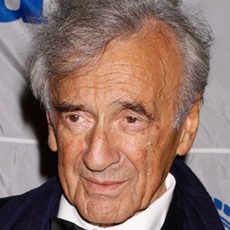
2016 – Elie Wiesel, once a prisoner at Auschwitz and Buchenwald concentration camps, but survived to become a Nobel Peace Prize laureate, prolific author and outspoken activist, died at the age of 87.
Sent to Auschwitz at the age of 15, Wiesel survived by performing manual labor, knowing he would die if he was unable to work. After being liberated while at Buchenwald, he went on to become a writer, authoring 57 books, including Night, a work based on his experiences as a prisoner in the concentration camps.
Night would form the first part of Holocaust memoir trilogy that would include Dawn and Day.
Wiesel was awarded the Nobel Peace Prize in 1986, at which time the Norwegian Nobel Committee called him a “messenger to mankind”, stating that through his struggle to come to terms with “his own personal experience of total humiliation and of the utter contempt for humanity shown in Hitler’s death camps,” Wiesel had delivered a message “of peace, atonement, and human dignity” to humanity.
As a closing thought … If you have never read Night, you have missed out on one of the greatest pieces of literature ever written.
“Never shall I forget that night, the first night in camp, which has turned my life into one long night, seven times cursed and seven times sealed. Never shall I forget that smoke. Never shall I forget the little faces of the children, whose bodies I saw turned into wreaths of smoke beneath a silent blue sky. Never shall I forget those flames which consumed my faith forever. Never shall I forget that nocturnal silence which deprived me, for all eternity, of the desire to live. Never shall I forget those moments which murdered my God and my soul and turned my dreams to dust. Never shall I forget these things, even if I am condemned to live as long as God Himself. Never.“
Let that sink in the next time you’re having a bad day.
Compiled by Ray Lemire ©2023 RayLemire.com. / Streamingoldies.com. All Rights Reserved.
Incredible recount of the history of this country Ray!! Thanks!
Thank you, Al. Much appreciated!